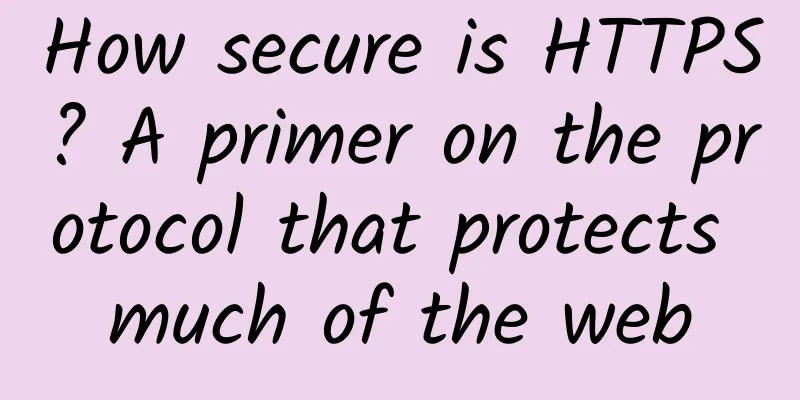How secure is HTTPS? A primer on the protocol that protects much of the web

|
From entertainment sites to online banking sites, most platforms today use HTTPS instead of HTTP. This is a security protocol that ensures that the website in question uses secure, encrypted data protection. Of course, all of this is beneficial for both providers and visitors. When we visit a website using this protocol, we enter a platform that uses a more secure encryption protocol, which is much more secure than non-encrypted protocols. If a website does use HTTPS, you can see a padlock icon next to its address. Despite its popularity, some people still wonder if HTTPS is actually secure. The short answer is that it is, in fact, secure, especially if you compare it to other protocols that came before it. If implemented properly, the protocol can be a clever way to ensure that users are accessing legitimate websites that actually respect the privacy of their data.Beyond that, there are a few other things to know about HTTPS and how it differs from HTTP. Is HTTPS really secure?As we all know, HTTPS is the most secure because it protects both parties by using channels and encryption protocols. It is welcomed by stakeholders because it can effectively guarantee additional security. If you look at the data, HTTPS is indeed the most secure option, used by 94% of desktop and 93% of mobile connections. A whopping 89.3% of desktop internet home pages and 85% of mobile pages are served over HTTPS. HTTPS is proof that the website is actually legitimate. If the website does have a padlock icon, don’t worry too much. However, if you need more security, you can also use a dedicated IP. A dedicated IP VPN can provide better accessibility to certain online services or websites. Although it may be a bit expensive, it is definitely worth the money, keeping in mind the many benefits you may get from it. Therefore, we strongly recommend using a reputable service to ensure you get the best quality. HTML and HTTP, HTTPSHTML was the protocol used by most websites before HTTPS came along. Of course, between the two, HTTPS is more secure because it uses digital authentication and encrypted connections, and any incoming or outgoing information will also be encrypted. Another notable difference is the use of ports. HTML uses port 80, while HTTPS uses port 443, which became the standard port for the protocol. The reason why people consider HTTPS to be a better option is because it is able to encrypt information. This is not found on HTTP (the early and older version of the protocol). When a website activates the HTTPS protocol, any important information, including account details, becomes much harder to intercept by outsiders. Since HTTP does not have any of these encryption features, it is essentially riskier to use it, as any outgoing or incoming information can be intercepted midway. Is now the best time to use HTTPS?We strongly recommend using HTTPS if your website does not have this protocol enabled. Because most visitors usually avoid websites that do not use HTTPS, keep in mind that other protocols are more risky than others. Websites that still use old protocols are more prone to cybersecurity risks, especially data theft. When such problems occur, it is difficult for website owners, and they will eventually lose the integrity and trust of their visitors. Since the information can be easily intercepted, it can also be dangerous for the visitors as their data can easily be stolen without their knowledge. Losing just one account can feel terrible, imagine how it would feel if you lost important private data like credit card numbers, social numbers, etc. Therefore, to stay away from those dangerous cybersecurity risks, it is better to activate the protocol now. Changing the protocol from HTTP to HTTPS will not be a difficult task as there are many tutorials available for you to refer to. By taking a few simple steps, you can make your website more secure and reputable, thereby attracting more visitors. |
<<: Master port isolation technology to make the network more secure
>>: 5G vs. WiFi 6: Tips for choosing the best wireless network option
Recommend
How powerful is pooling technology? I was shocked by the comparison between threads and thread pools!
[[335212]] This article is reprinted from the WeC...
Uncovering the secrets of CDN user-driven product changes
Preface : OTT-TV and IPTV have become popular due...
Hang Seng Bank launches new generation digital financial infrastructure LIGHT
On October 24, the 2020 Hang Seng LIGHT Developer...
TMThosting: Seattle high-security VPS monthly payment starts at $3.16, 20% off, supports Alipay
TMThosting is a foreign hosting company establish...
China Mobile builds the world's largest 5G network
One year after 5G was officially put into commerc...
Ruijie Networks releases "U Space" solution, a new choice for remote office
Some time ago, Shenzhen, under the epidemic, cont...
UL launches Wi-Fi 6E testing service in Europe
UL announced this month that it has begun offerin...
Nearly 150 universities have adopted the simplified Ethernet all-optical network: it is not only as simple as 10G access to the room and simplified operation and maintenance!
[[416673]] In the first year of the 14th Five-Yea...
Learn InnoDB tablespace
[[408831]] This article is reprinted from the WeC...
Java performance optimization RPC network communication
[[277794]] The core of the service framework The ...
The IPv6 in-depth promotion meeting was held in Beijing. Why does China want to promote IPv6 "desperately"?
Recently, the "Conference on Deepening the I...
An article reveals the practice and thinking of edge computing reference architecture 2.0
[51CTO.com original article] With the development...
Ministry of Industry and Information Technology: Make the digital economy bigger and stronger and promote the construction and application of 5G networks in an orderly manner
[[361436]] According to the Ministry of Industry ...
Three major 5G concepts and four key technologies
The situation is tense and there is little conten...









